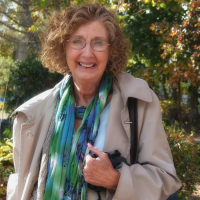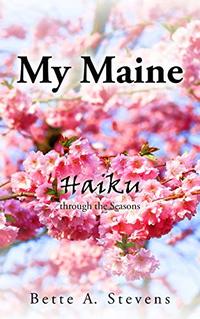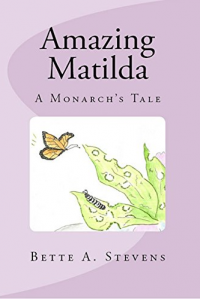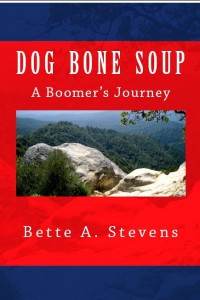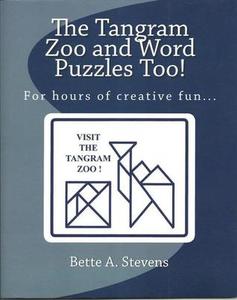Bette A. Stevens Interview Published on: 02, Apr 2018
 Tell us a bit about where you grew up and how that coloured your life and writing.
Tell us a bit about where you grew up and how that coloured your life and writing.
Our family lived in California during my early year and moved to New York to be near my father’s family when I was 11. I was the eldest of five children—the shy one. I loved the outdoors and enjoyed sketching and painting. Since our family moved quite often due to my dad’s work, my closest friends were often found in books. As an avid reader of fiction and non-fiction, I fell in love with words and discovered the power of the page at an early age.
What are some really important things you learnt during your time as a teacher? When did you feel most proud of being a teacher?Teaching became a second “dream career” after two decades in the business world. During those years in elementary and middle-school classrooms, my students taught me as much as I taught them. Every child is special and needs all the love and encouragement we can offer. They all have gifts and as adults and teachers, it’s our job to shine a light on them.
There is no greater pride for me than when a student smiles. I take pride in their every accomplishment.
What are the best and worst parts about living on a farm?The best thing about living on a farm is two-fold—independence plus the gift of enjoying the natural world in an up-close way. The worst part is the labor and disappointments, but those are part of life no matter where you live or what you are doing.
Can you name some of your favourite poets and your favourite poems by them?A few of my favorites:
Emily Dickinson Hope is the thing with feathers
Robert Louis Stevenson My Shadow
Joyce Kilmer Trees
No, I was never bullied as a child. Yet, I observed other children who were. I have known adults who shared stories of being bullied by their peers and mistreated by children and adults. I share some of these stories in my books PURE TRASH and DOG BONE SOUP.
My advice to kids who are being bullied is this—surround yourself with compassionate adults and let them know what’s happening. Smile, reach out and be kind to other kids. Everyone needs a friend.
Adults, keep your eyes open and find caring kids to pair up with any child who is always alone or being bullied—children who are different in any way. Befriend kids in your neighborhood—a caring adult can make a world of difference and set an example for children and for other adults to follow.
How do you hope the book "The Tangram Zoo and Word Puzzles Too!" will impact your readers' lives?THE TANGRAM ZOO… is a teaching/learning tool that’s not only great for the classroom, families enjoy it too. The book melds the Chinese tangram puzzle with English rhyming riddles and encourages readers to create their own pages to add to the book. Tangrams are used to teach shape, measurement and geometry. Readers research to find unique facts about the tangrams they create. They’ll learn how to use a thesaurus and a rhyming dictionary to write their own riddles. Solving and creating tangram puzzles were a favorite pastime of presidents and poets in the 1800s. THE TANGRAM ZOO…is a great multicultural and interdisciplinary resource for educators and parents. It’s creative and fun!
What is it about Monarch butterflies that really caught your attention? Who was the illustrator for the book "Amazing Matilda"?Growing up in California at a time when Monarch butterflies were bountiful, I loved to catch and release them. Being a nature lover, I was fascinated by all butterflies, but Monarchs were special. Their brilliant color shimmers in the sunlight—much like stained glass windows. While taking a science education course in the 1990s, I discovered that Monarchs were an indicator species—letting us know the status of our environment. Monarch butterflies are the only butterfly known to migrate. Findings on the status showed that Monarch numbers were decreasing drastically. That’s when I decided to write AMAZING MATILDA. Since that time, the Monarch’s welfare has plummeted to Endangered Species status.
AMAZING MATILDA was illustrated by Bette A. Stevens (me) using pencil and watercolor.
Is there a lot of research that goes into writing Children's books? If so, what kind of research did you have to do for "Amazing Matilda"?I began researching Monarch butterflies as soon as I discovered they were considered an indicator species. The book MONARCH BUTTERFLY by Gail Gibbons was an excellent place to start. This non-fiction picture book describes the life cycle, body parts, and behavior of the monarch butterfly. However, I could not find a fictional story about Monarchs that would not only instruct young readers on the life cycle of the butterfly, but one that would teach children life lessons as well. After all, children are like butterflies—they change and grow, struggling along the way as they follow their dreams. And so, AMAZING MATILDA was born!
As the Monarch plight continues, so does my research. I’m a member of Monarch Squad/WorldWildlifeFund and Journey North (an organization that tracks Monarch migrations). In addition, I receive Google alerts for all news about Monarchs. Milkweed is the only plant that Monarch caterpillars eat.
Where did your inspiration for "PURE TRASH" and "DONE BONE SOUP" come from? Why did you choose to set the tales in the 1950s/60s?As a baby boomer growing up in an average middle-class family in America during the 1950s and 1960s, poverty was not something I had to think about as a child or as a teen. For me, poverty was invisible.
Over the years, I’ve encountered poverty vicariously through the stories of those who lived it in the 1950s and 60s and those who are living it today. Adult friends and acquaintances grew up in this invisible world?one where being poor was an accepted part of life for those who were there. Their stories inspired me to write about them.
As an elementary and middle-school teacher (retired), I witnessed the direct effects of poverty’s aftermath on kids. Don’t be disheartened, though. I’ve seen students, teachers, counselors, librarians, volunteers, administrators, parents, as well as church groups and other community members who have made and are still making a difference in the lives of the poor and “different” among us.
The fictional books PURE TRASH and DOG BONE SOUP follow Shawn Daniels (poor boy and protagonist) growing up in rural New England during the 1950s and 60s. The topic of “poverty and prejudice” remains a sensitive subject to address. Historical fiction provides a vehicle not only to bring this theme to the forefront, but to connect it directly to readers through the trials and triumphs of the characters.
What are some magazines or resources you used to do the research for "Pure Trash" and "Dog Bone Soup"?Poverty in America during the 1950s and 1960s was simply ignored in our wealth-burgeoning society. I was not alone in my ignorance. “[In fact, it’s been more than 50 years] since Americans, or at least the non-poor among them, ‘discovered’ poverty, thanks to Michael Harringtton’s engaging book The Other America.” (Twisting the Phrase “Culture of Poverty” Barbara Ehrenreich March 16, 2012).
Other resources included internet searches of US government websites and news article of the period (i.e.: Vietnam War, death of President John F. Kennedy) so that I could accurately portray major historical events of the era that are included in DOG BONE SOUP.
Define the term "success" according to what it means to you? Would you call yourself successful?I think that success is a day by day journey through which we try to make the world a better place. Some days I feel more successful than others. Fortunately, a new leg of life’s journey starts every morning. We can smile and enjoy the challenges and rewards of each new beginning.
What has been the most fun you've had as a writer?The most fun I have as a writer is reading and talking about books and about writing and illustrating with children.
Walk us through a normal day as you. What's the best part of your day?A normal day begins with a cup of hot tea and fruit or an oatmeal bar. Next comes devotional reading, prayer, journaling and firming up my agenda for the day. I generally walk a mile or two and take in the wonder of the great outdoors before noon. Hubby prepares the meals, while I get caught up on house and garden tasks. I spend about an hour or so checking and responding to email and social media messages. Afternoons I’m often reading or spending time with family or friends. After dinner and the news, it’s computer time until 9 or 10 p.m. I’m currently working on a poetry collection that I plan to publish this year. After that, it’s time to kick back and relax.
One of the best parts of my day is enjoying a cup of tea first thing in the morning—blessed that a new day with unlimited possibilities has begun. During late spring, summer and early fall, that time is spent out on the back porch, reveling in the beauty that surrounds us here at the farmstead in Central Maine.
Share Bette A. Stevens's interview
From California to New York, Bette Stevens was the eldest (and shyest) of five children and loved the outdoors, and sketching and painting. Always having to move as a child, her closest friends were often found in books. Teaching became a second “dream career” to her after two decades in the business world, and there is no greater pride for her that when a student smiles. Her stories PURE TRASH and DOG BONE SOUP deal with bullying and her advice to kids who are being bullied are to reach out and find compassionate adults and let them know what’s happening. And to adults to keep their eyes open. She is currently working on a poetry collection that she plans to publish this year.
